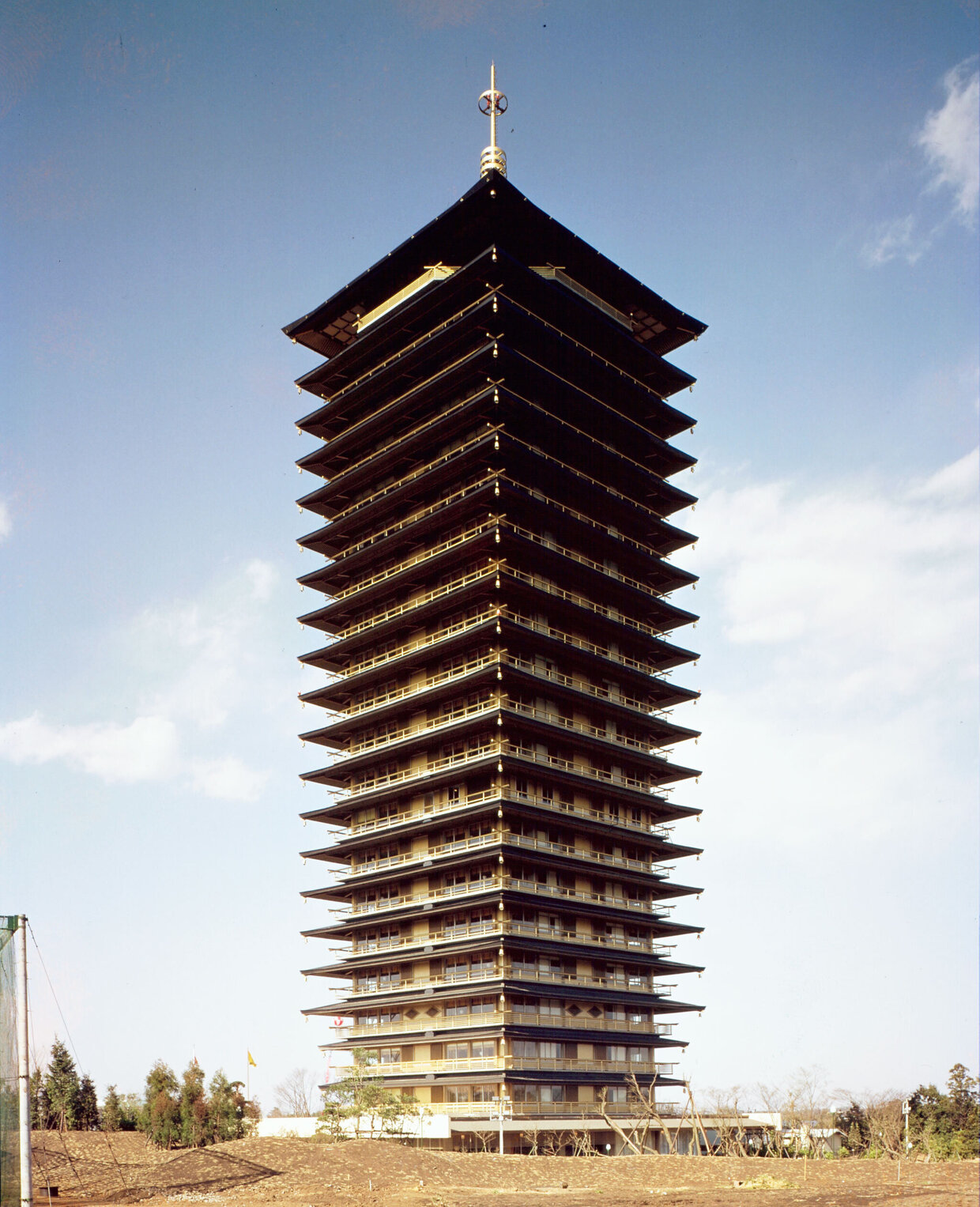The Winds of Innovation
The war officially came to an end in September 1945 when Japan signed the instrument of surrender on the decks of the battleship USS Missouri. The long nightmare of war had come to an end. From this turning point, Japan experienced a succession of sweeping changes that spanned politics, the economy, culture, and the daily life of the Japanese people. The construction industry was no exception. At the January 1947 first assembly of the New Year, President Yoshiro Obayashi called for innovation in the company’s corporate philosophy. He envisioned a fundamental shift in thinking from profit-making to an emphasis on productivity. He challenged the company to serve as a force supporting Japan’s democratic development under leadership guided by more scientific approaches to management.
The most notable construction projects in the immediate aftermath of Japan’s defeat were for the Allied occupation forces. After the war, the U.S. Army led a large occupation force which was stationed throughout Japan to ensure governance of the country. The Occupation had unconditional authority to issue orders for the construction of new airfields and for the maintenance of existing airfields. The Occupation also commissioned the construction of troop barracks and family housing, as well as the renovation of requisitioned housing for high-ranking officers. These projects were carried out under strict military supervision and deadlines were tight. At the same time, with their detailed specifications, mechanized construction methods, modern style of management, state-of-the-art equipment, and strong emphasis on health and safety, these projects served as a blueprint for the modernization of the construction industry.
In addition to the projects for the Occupation, the postwar construction industry was also bolstered by public infrastructure projects. These projects had an immediate effect on production and provided jobs for the unemployed. As Japan began to return to normalcy, companies started to rebuild and modernize their production facilities, a process which in turn stimulated the demand for construction services.
The immediate postwar era also saw the construction of hydroelectric and thermal power plants throughout the country in response to increased demand for electric power. One such project was the Nukabira Dam, a project on which Obayashi Corporation staked its very future. The dam was located in the Daisetsuzan National Park in Hokkaido, a region with extremely cold winters, with temperatures falling to -20ºC (-4ºF). Despite these severe conditions, the company marshalled its forces to complete the project in three years—right on schedule.
In this way, the construction industry, while rebuilding itself, fulfilled its role as a leader in postwar reconstruction.
It was due to the economic boom created by the Korean War (1950-1953) that Japanese construction companies, which had been struggling to rebuild a Japan devastated by war, were able to rebuild their own business. Obayashi Corporation completed its basic corporate restructuring in 1951. As director (and later chairman) of the National General Contractors Association of Japan as well as director (later chairman) of the Management Committee of the predecessor of today’s General Contractors Association of Osaka, President Yoshiro Obayashi served as a leader in rebuilding Japan’s construction industry as a whole. As a representative of the construction industry, Yoshiro took an active role in the enactment of Japan’s Construction Business Act.
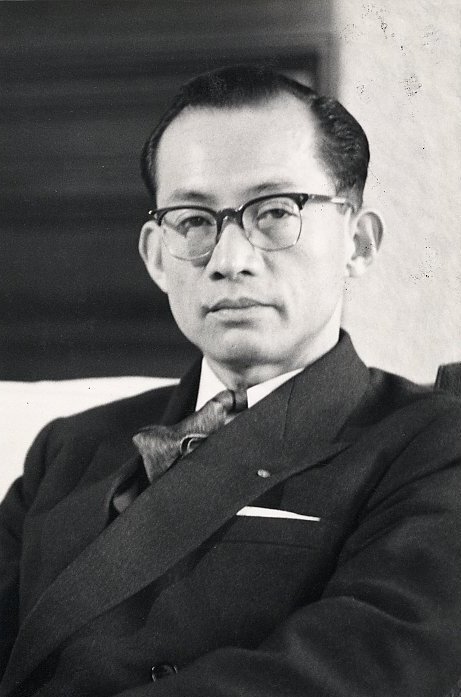
Progress in Construction Technologies
Over the five years following the Korean War, construction technology returned to pre-war levels, laying the groundwork for the various technologies that would define in the industry after 1955.
After the war, the Japanese construction industry was largely dependent on heavy equipment discarded by the U.S. military and placed under the control of the Special Procurement Board, or equipment that had been purchased by the government. This equipment was lent out to builders while remaining under the control of the government. With the increase in the number of large-scale projects, such as dams and other civil engineering work, construction companies started to acquire their own equipment outright.
As the economy recovered, the number of building construction projects increased, and construction companies brought in bulldozers, power shovels, and other equipment to do the job. In 1953, conveyor belts were used in the construction of the new wing of the NHK Tokyo Broadcasting Center. In that same year, work began on the Tokyo Station Yaesu Main Building and Tetsudo Kaikan projects. In these urban projects, Obayashi Corporation used fully automated concrete plants, which had found initial use in dam construction. This technology represented a significant improvement in concrete construction.
Still another breakthrough was achieved during this period: the introduction of ready-mixed concrete to replace concrete that was mixed on site. Obayashi’s first use of ready-mixed concrete was in 1952 in the construction of the Asagaya branch of the Teikoku Bank (later Mitsui Bank) in Tokyo.
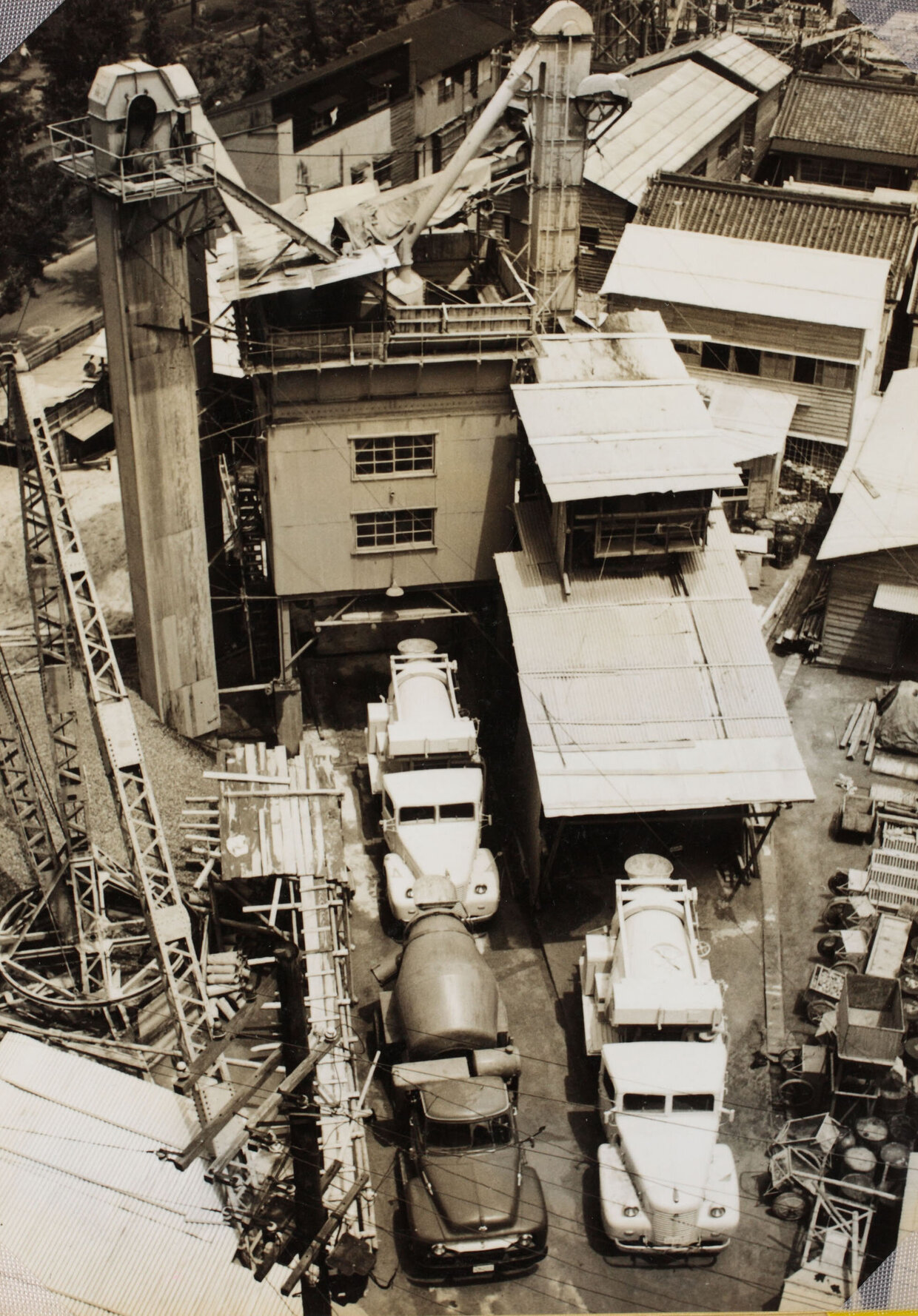
(construction of the former Sanwa Bank headquarters)
In 1950, President Yoshiro Obayashi visited the United States to see for himself the new technologies and methods of mechanized construction that were being used there. As a result, the company pressed ahead with modernization of its construction methods and the purchasing of heavy equipment.
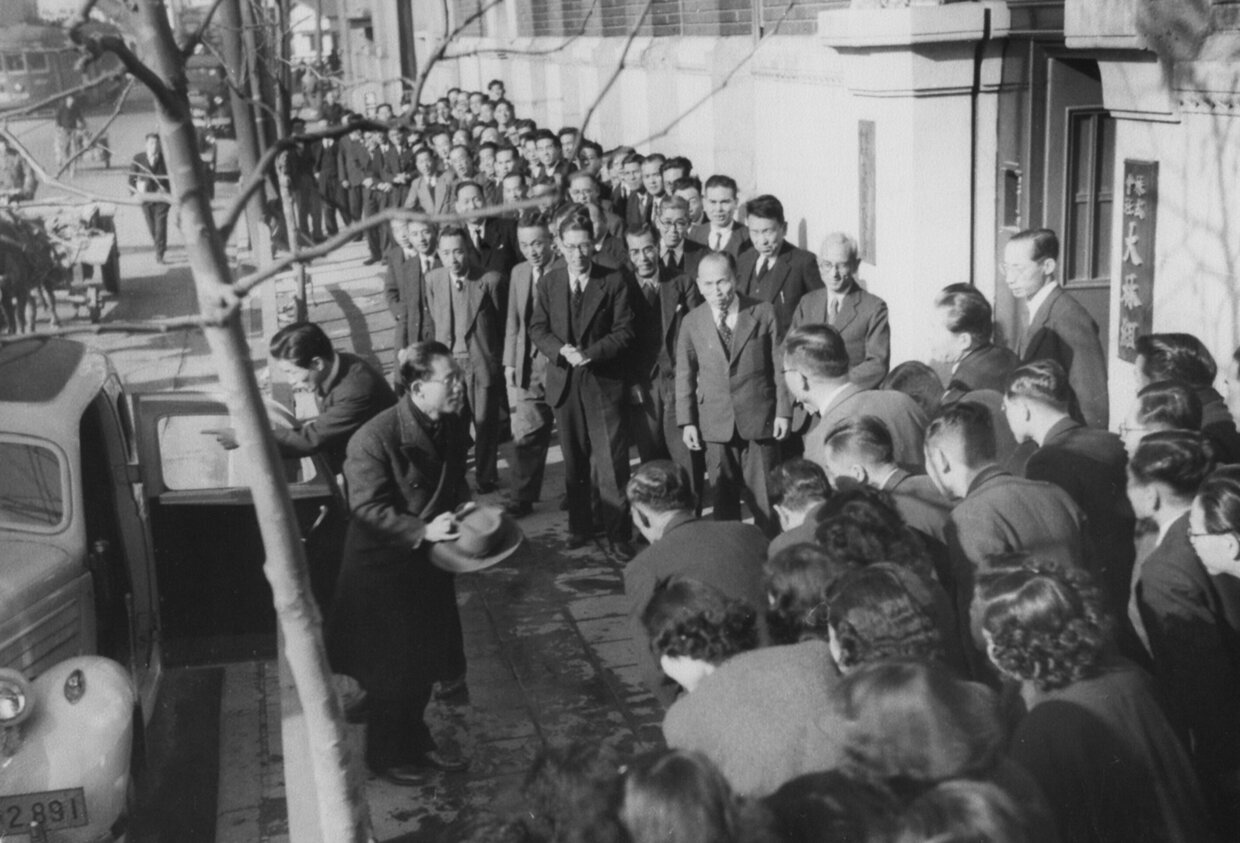
Forging Ahead During the Era of Rapid Economic Growth
The 1956 White Paper on the Economy declared that Japan’s postwar era had come to an end, marking the beginning of a period of extraordinarily rapid economic growth—and a time of unprecedented prosperity for Japan’s construction industry. It was during this time that Obayashi Corporation grew to become a leader among Japan’s general contracting companies.
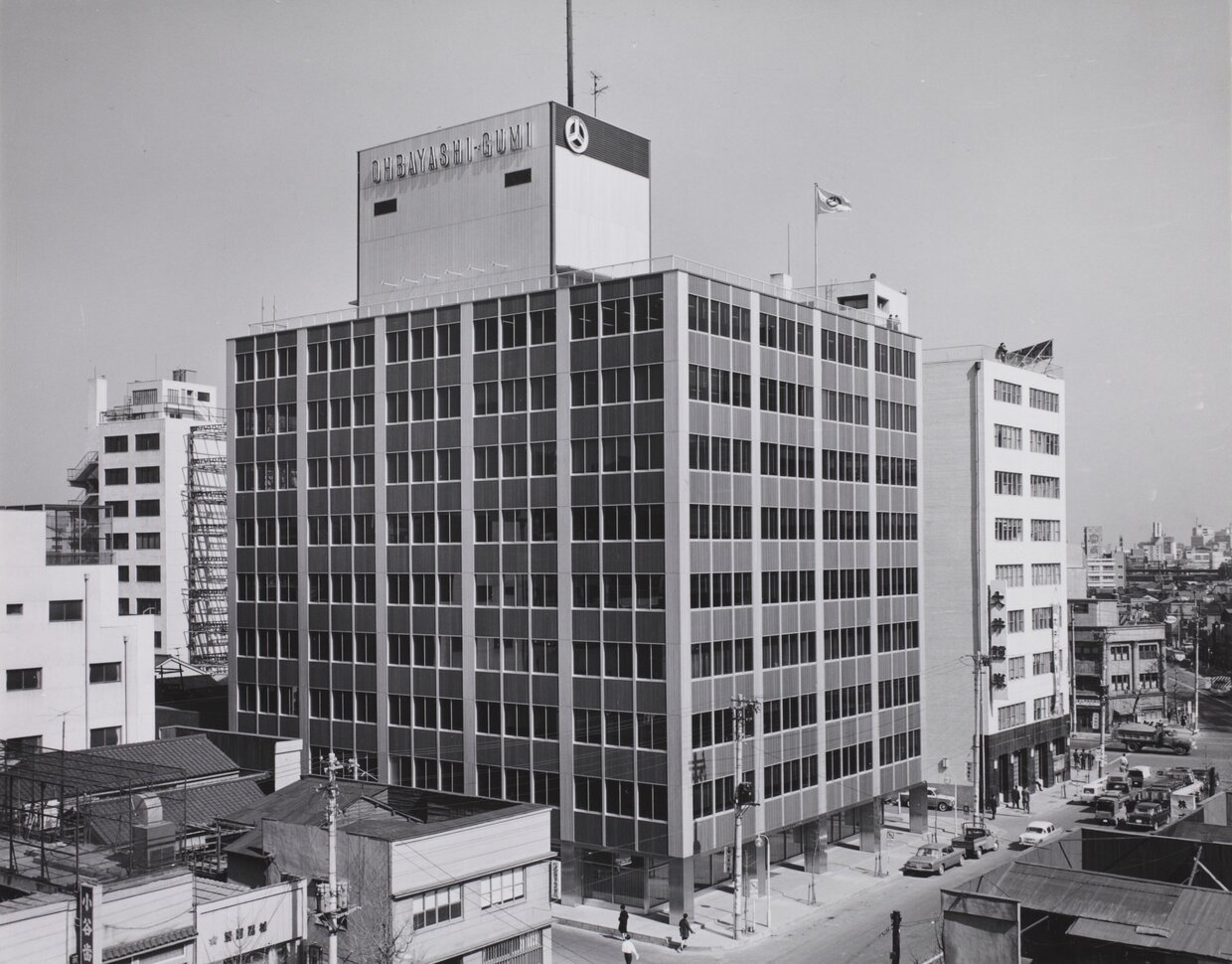
This acceleration of economic development also marked a turning point for the construction industry. Companies soon needed unprecedented levels of funding to undertake major projects.
The rapid development of mechanized construction meant that companies had to invest significant amounts of capital to support these technologies. At the same time, construction costs increased as projects became more diverse and larger in scale. Clients also were now more likely to impose conditions on payments. To respond to these changes, Obayashi Corporation made an initial public offering, seeking funding from general investors to secure the company’s future. As a first step, the company made itself available for over-the-counter trading on the Osaka Securities Exchange in 1957, and in 1960, was listed on the Tokyo Stock Exchange.
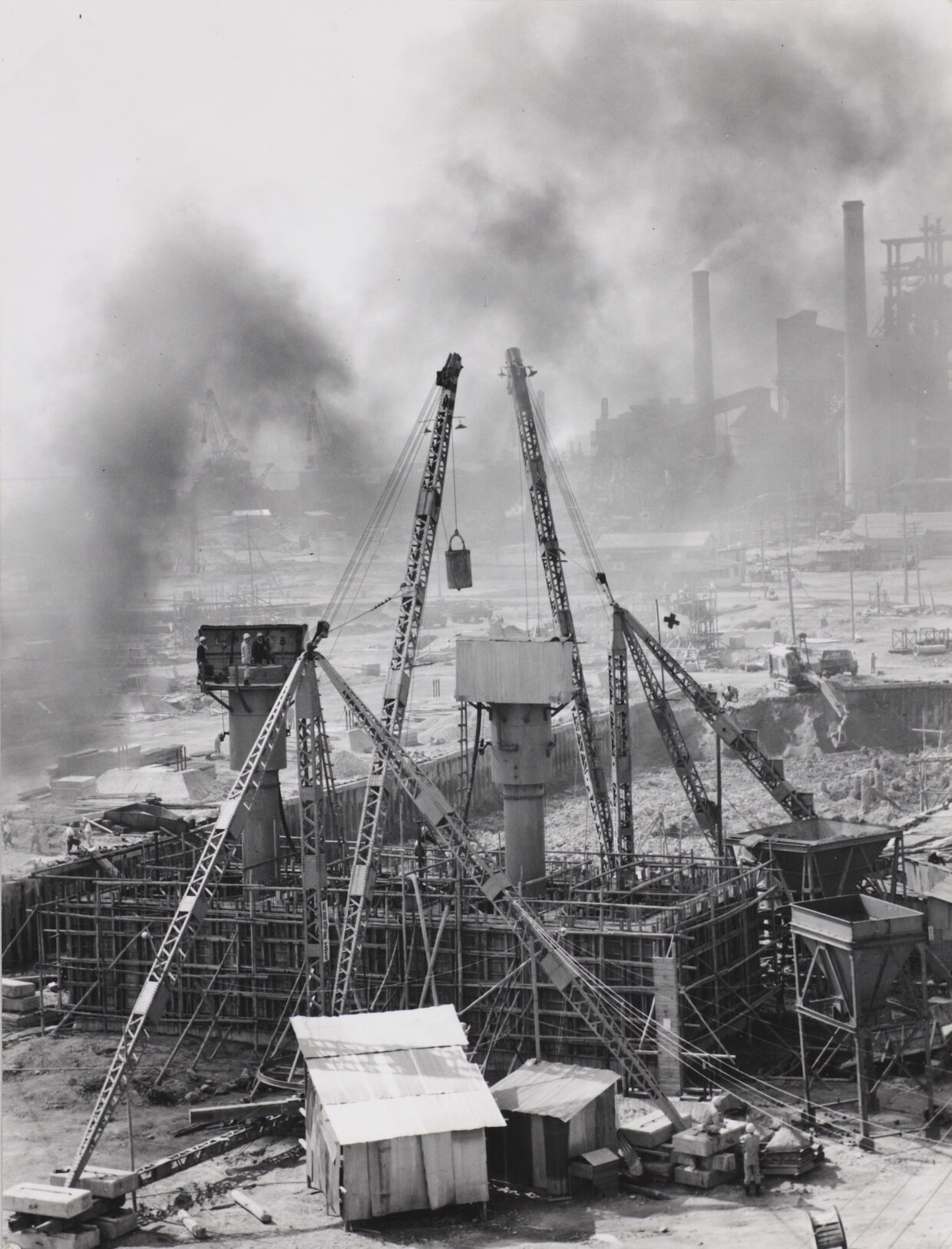
(at the construction site of Kobe Steel’s Nadahama plant, circa 1961)
The opening of the Second Section of the Tokyo Stock Exchange in October 1961 prompted more than 20 companies in the same industry to go public at the same time. The public took note of the fact that the traditionally closed and secretive ways of the construction industry were becoming a thing of the past. Publicly traded construction stocks became wildly popular, reflecting the building boom that was ongoing in Japan at the time.
First Steps and Expansion of Obayashi’s Overseas Business
In the aftermath of the Second World War, the expansion of Japan’s construction companies overseas centered on reparations projects in Southeast Asian countries, a pattern that extended from around 1954 to 1963. During this period, Obayashi was awarded contracts in Indonesia for the construction of the Musi River Bridge in Palembang, Sumatra, and the Sarinah Building in Jakarta. In Cambodia, it was awarded a contract for the construction of the Agricultural, Pastoral, and Medical Centers under a program of grant aid under an Economic and Technical Cooperation Agreement with that country.
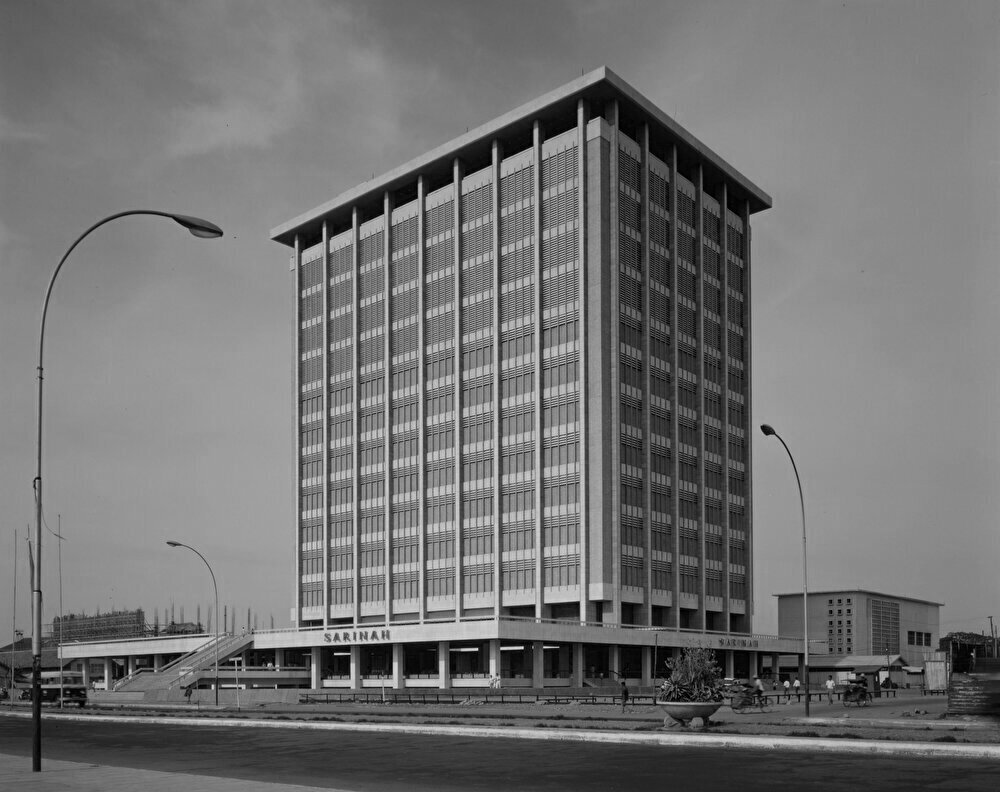
Even prior to these reparation projects, however, the construction industry had already begun to turn its attention to markets beyond Japan’s shores. Starting in the mid-1950s, Obayashi Corporation executives traveled throughout Southeast Asia to conduct market research. At the time, the Overseas Construction Department was preparing for the near future when the company would be positioned to support the development of newly emerging economies. Thanks to the reparations projects, Obayashi was able to get a clearer picture of the situation on the ground in each country.
In 1963, President Yoshiro Obayashi visited several countries in Southeast Asia to see for himself the local conditions in the region.
His visits spurred the company to open its branch in Thailand, the company’s first overseas office. Obayashi’s representative office in Bangkok opened in April 1964, making Obayashi the first Japanese construction company to gain a foothold in that country. The new AIA (American International Assurance) building was commissioned at around this time, Obayashi’s first full-scale commercial project outside of Japan. The establishment of Thai Obayashi Corporation Limited in 1974 allowed the company to build up a track record throughout the region.
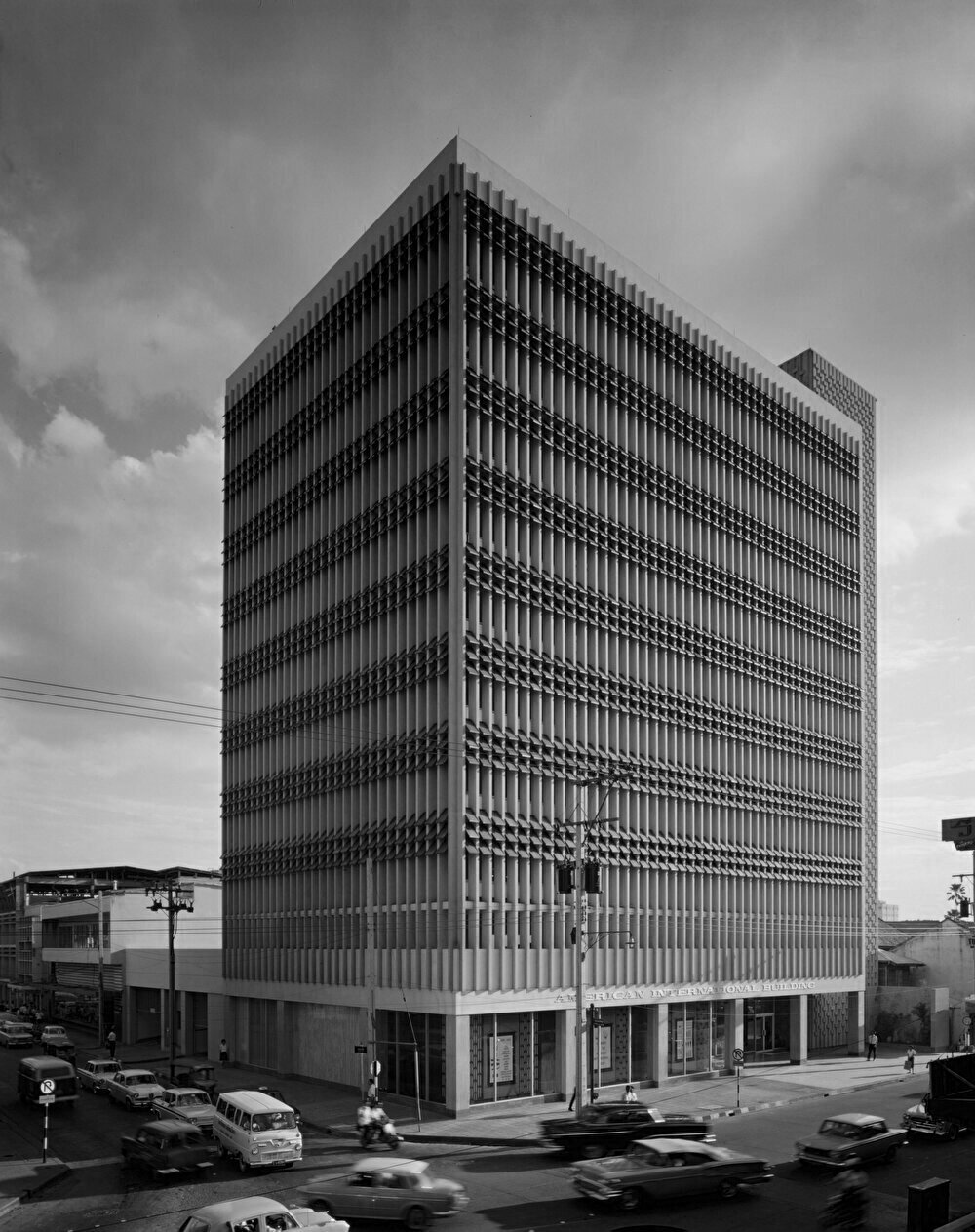
In 1966, the company extended operations to include Hawaii, where Obayashi Corporation was selected to build the Surfrider Hotel in Honolulu. In April 1966, Obayashi’s local branch was formally registered as a foreign company. The branch soon became a base for expanding the company’s operations into the United States. In these overseas construction projects, Obayashi supported the development of local communities, endeavoring to build international goodwill by reaching out to and interacting with local communities.
Establishing the Obayashi Technology Research Institute
During the 1960s, Japan prioritized improvements in social infrastructure. These initiatives in turn sustained robust demand for public sector spending. Investment in new fields, such as nuclear power and the information industry, also began at this time, leading to a sharp increase in joint venture projects. Overseas construction also began to take off. The 1960s was a time of dramatic progress and new developments in the construction industry as a whole.
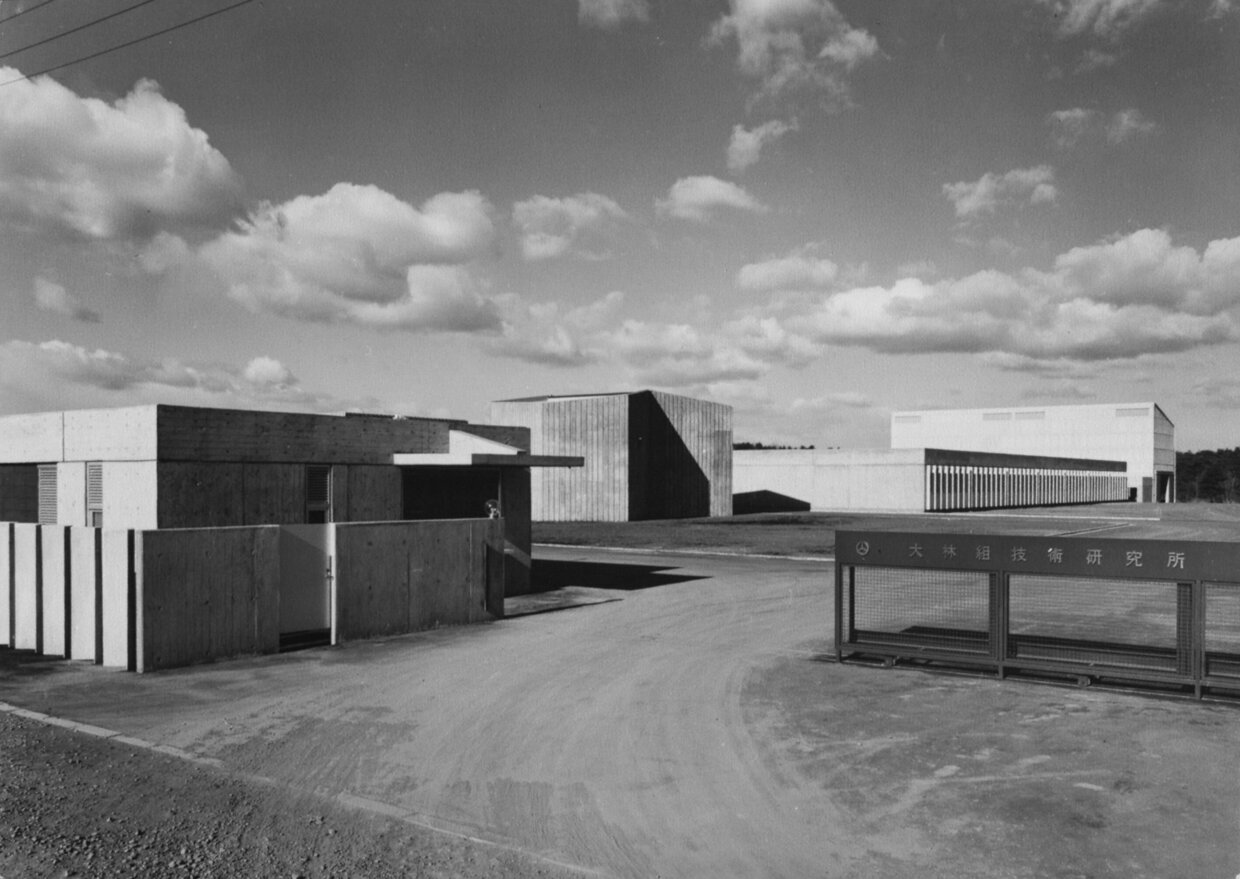
In 1965, Obayashi’s Technology Research Institute was opened in Kiyose, Tokyo to pursue research into construction technologies. The development of new construction methods led to contracts for a wider variety of large-scale projects.
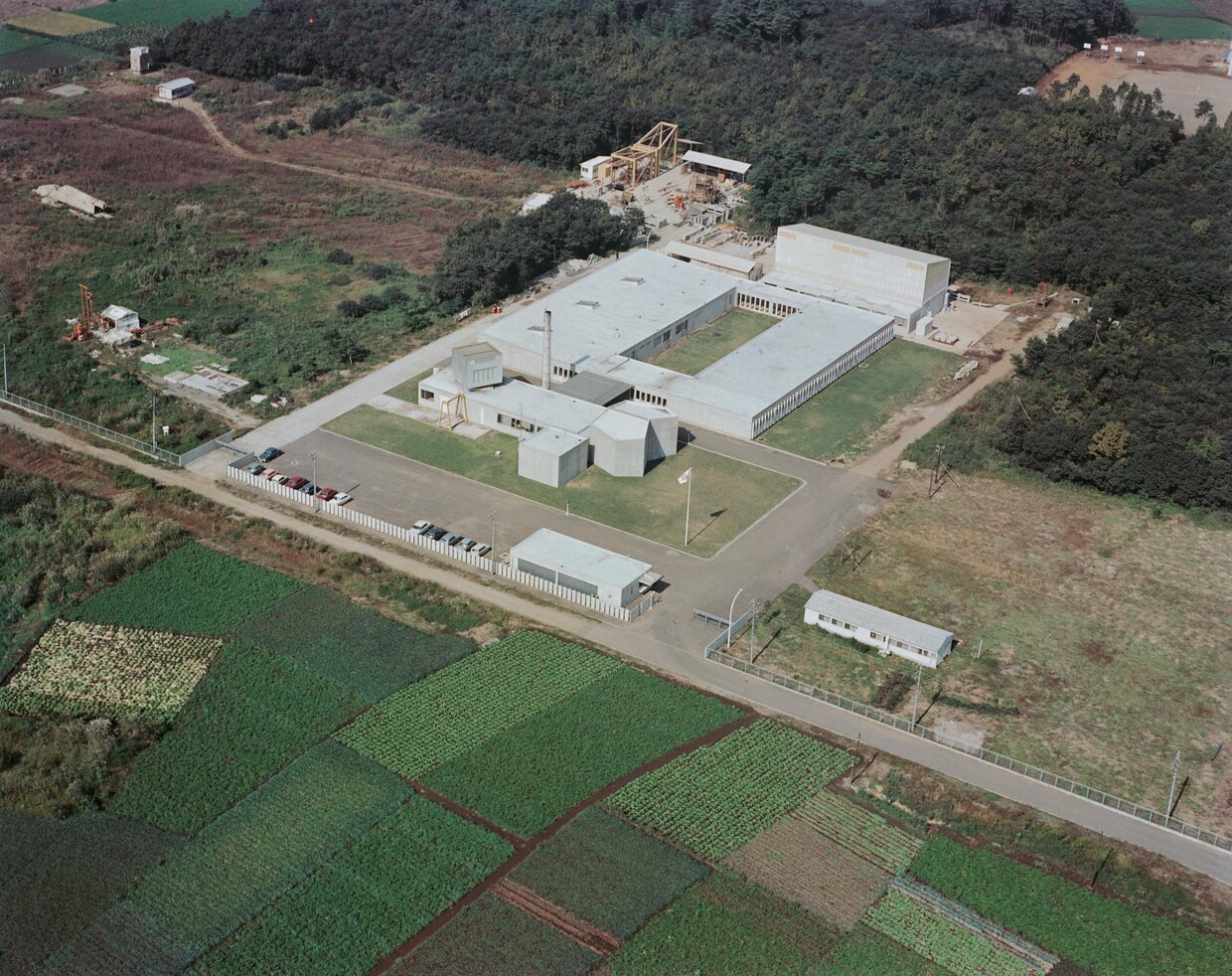
March 1965 saw the completion of Hotel Empire in Yokohama Dreamland, a pioneering example of skyscraper architecture in Japan.
